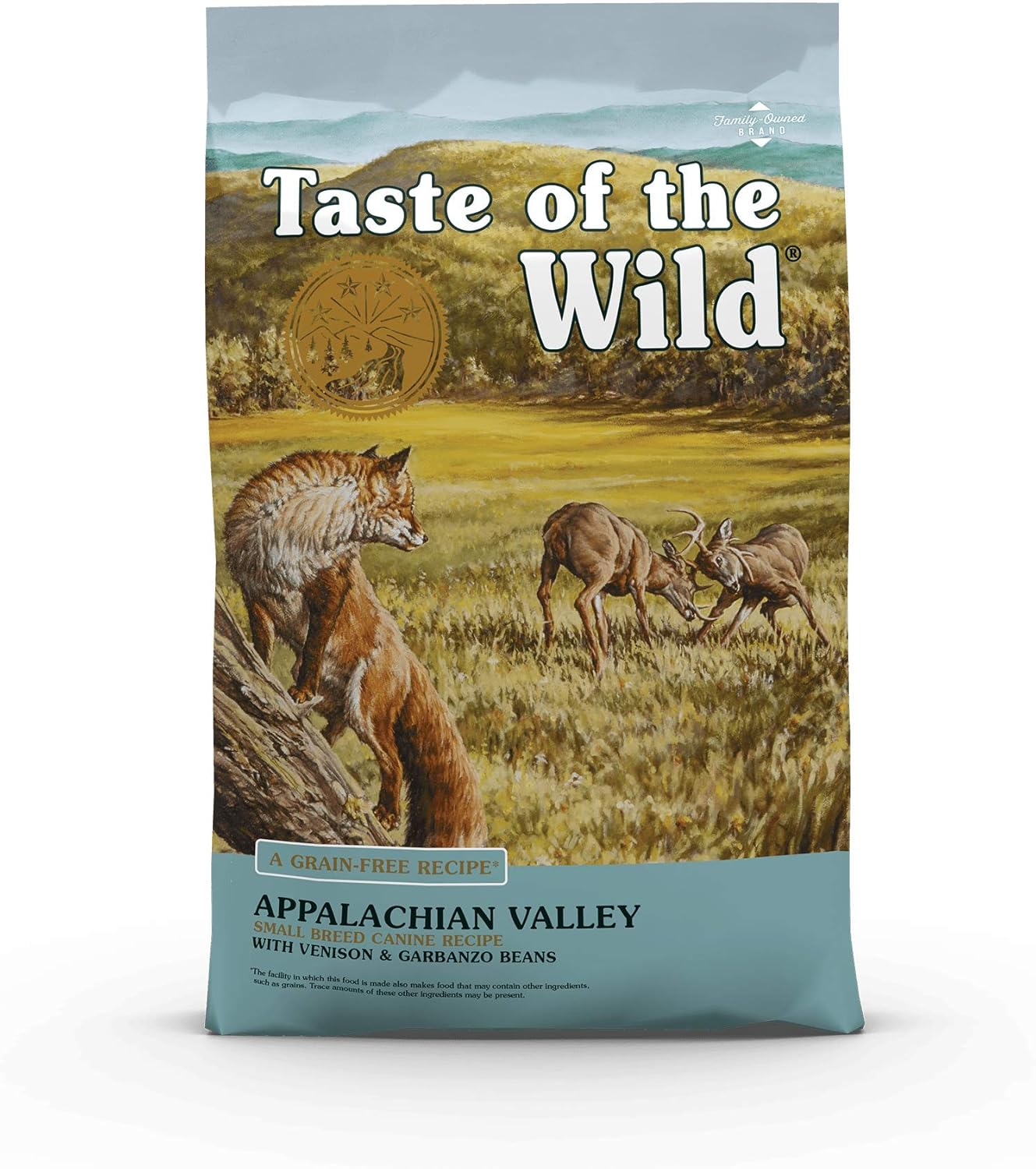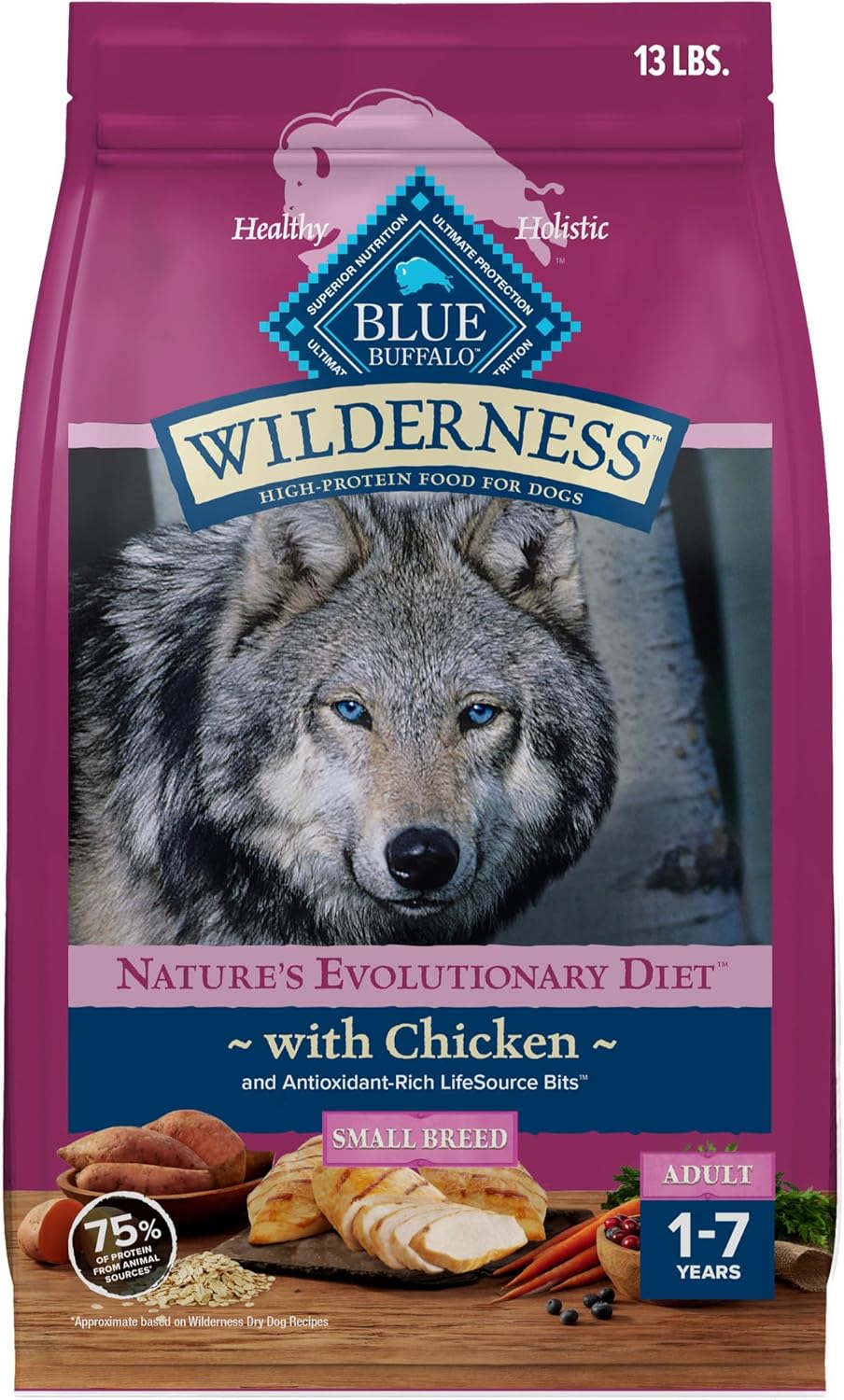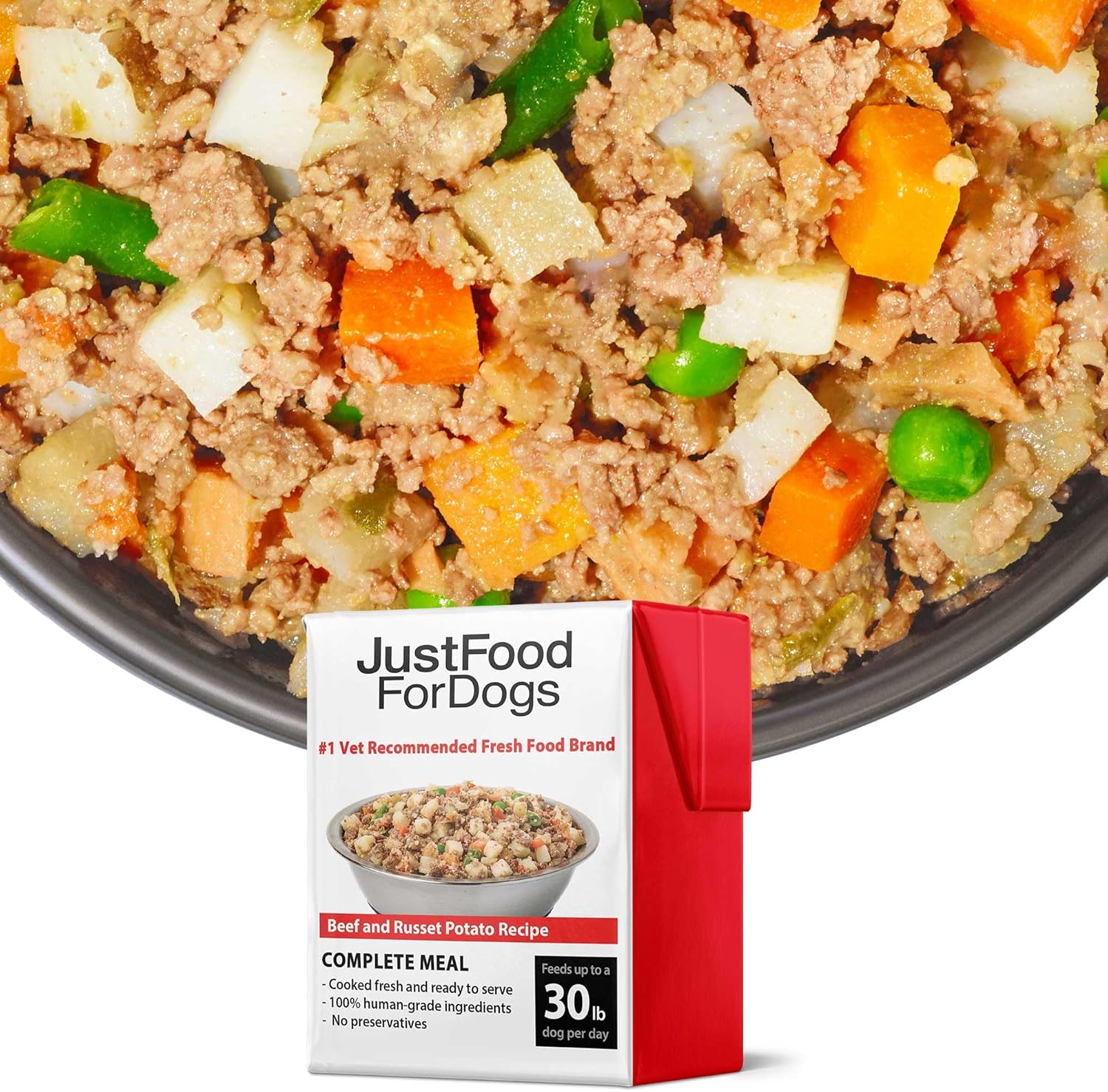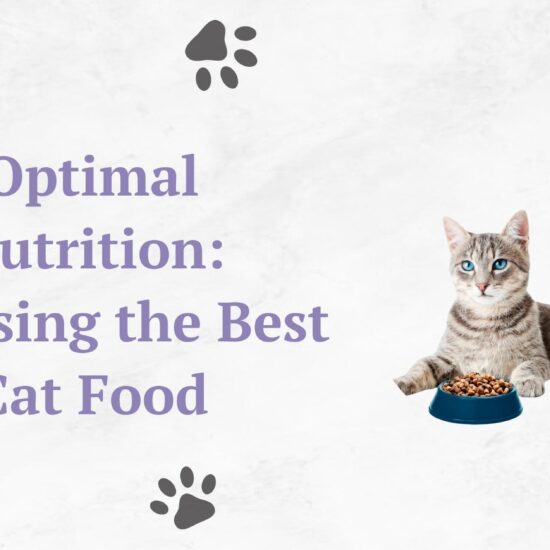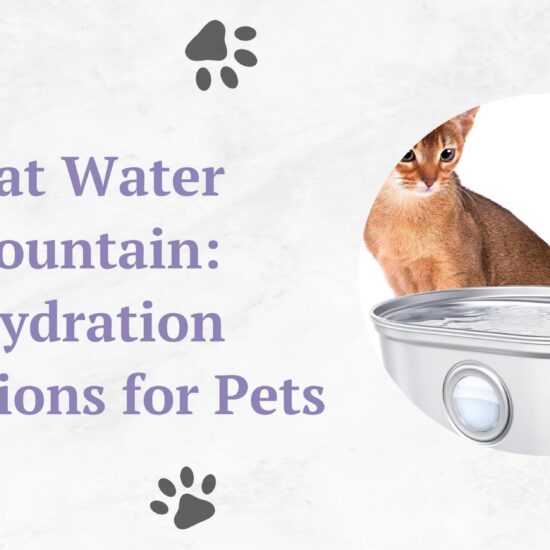When you first met your dog, there was an instant connection—a spark that sparked a bond meant to last a lifetime. As they look up at you with those big, trusting eyes, their health and happiness become intertwined with yours. Choosing the right nutrition becomes crucial in this journey, ensuring they thrive and enjoy every moment with you.
This guide explores the Best Dog Food for Your Breed. It shows how different dog food formulations cater to the specific nutritional needs of various breeds. With Breed-Specific Dog Foods, you’ll discover how to support your furry companion’s vitality with the top picks available, carefully crafted to promote well-being and longevity.
Let’s embark on this informative journey together. We’ll take a deep dive into the Dog Food Reviews you need before making that critical choice for your four-legged friend.
Table of Contents
Understanding Breed-Specific Dog Foods
Breed-specific dog foods meet the unique needs of different dog breeds. They consider size, metabolism, and activity level. For example, large breed dogs need foods with lower caloric density to avoid rapid growth and joint issues. Small breed dogs, on the other hand, need higher caloric density because they burn calories faster.
Large breed dog food has a slightly lower fat content to help them stay healthy and avoid obesity. It also includes nutrients like glucosamine and chondroitin for joint support. The kibble size is larger, helping with chewing and oral health.
Small breed dog foods have bite-sized kibble for easier eating. They are rich in protein and fat to meet their high energy needs. These diets also focus on dental health, immune support, and lean muscle maintenance.
Even though dogs share 98% of their DNA, size, age, and activity level are more important for diet. A recent review found that high-quality general diets can meet dogs’ nutritional needs without breed-specific foods.
| Attribute | Large Breed Foods | Small Breed Foods |
|---|---|---|
| Caloric Density | Lower | Higher |
| Fat Content | Lower | Higher |
| Kibble Size | Larger | Bite-sized |
| Nutritional Focus | Joint support, heart health | Dental health, immune support |
| Digestibility | Ingredients promoting healthy digestion | Easily digestible ingredients |
Breed-specific dog foods are often more expensive due to specialized research and marketing. However, the link between cost and nutritional benefits is unclear. Pet owners should consider their dog’s custom dog nutrition and how a tailored dog diet fits their pet’s health and lifestyle.
Importance of Nutrition for Different Breeds
Knowing the Nutritional Needs by Breed is key for a dog’s health. The right food greatly affects a dog’s life and health. Different foods are made for different breeds, taking into account size, age, and activity level.
Dogs need fats, proteins, carbs, vitamins, minerals, and water. Vets say the right mix of these is vital for all dogs. Active dogs need more fat for energy, while smaller breeds need more calories because they burn more.
Young puppies need food rich in energy to grow fast. Older dogs do better on lower-calorie diets because they don’t burn as much energy. Choosing the right diet can help prevent diseases like joint problems in big dogs or stones in older dogs.
| Dog Life Stage | Nutritional Focus | Key Nutrients |
|---|---|---|
| Puppy | High energy for growth | Proteins, fats, vitamins |
| Adult | Balance for maintenance | Proteins, carbohydrates, fats |
| Senior | Lower calories, health support | Fiber, vitamins, reduced fats |
Signs of a good diet include a shiny coat, lots of energy, the right weight, solid stool, fresh breath, and clear eyes. If a dog shows these signs, they’re likely getting the right food. Always talk to a vet before changing a dog’s diet, especially if they have health issues or special needs.
Best Dog Food for Your Breed

Choosing the right food for your dog is key for their health and happiness. There are 476 top dog food picks for different breeds. This helps owners find the best food for their dog’s needs.
Each of the 35 dog breeds has its own food recommendations. These consider their unique health needs. For example, big dogs need different food than small ones.
Many top brands offer quality food for these needs. They have 293 reviews and check 19 brands. There are also special diets for puppies, seniors, and picky eaters.
A vet panel helps pick the best food. They use their knowledge and quality standards. All food meets the Association of American Feed Control Officials (AAFCO) standards.
With deals like 35% Off + Free Shipping at Chewy, finding the best food is easy. Knowing what to look for helps keep your dog healthy and happy for years.
Top Picks for Large Breeds
Choosing the right diet for large breeds is important. They need special nutrition because of their size and health. Foods high in protein help support their muscles and joints.
Nutritional Needs of Large Breeds
Large breeds need a diet full of proteins, healthy fats, and vitamins. They should eat enough calories to grow without getting too fat. This can help prevent joint problems.
- High-quality protein: Necessary for muscle development and overall health.
- Controlled calorie intake: Helps prevent obesity, a common concern for large breeds.
- Moderate fat content: Supports skin, coat health, and energy levels.
- DHA and EPA: Important for cognitive development and joint health.
By focusing on these nutrients, large breed dogs can grow healthily. This reduces the risks of health problems from growing too fast.
Best Dog Food for German Shepherd Puppy

German Shepherds are smart and strong. They need the right food to grow well. Look for puppy food made for large breeds.
| Dog Food Brand | Protein Percentage | Suitable For |
|---|---|---|
| Wellness Core Large Breed | 37.8% | All adult dogs including large breeds |
| Ollie Chicken with Carrots | 30.8% | All adult dogs including large breeds |
| The Honest Kitchen Whole Food Clusters Beef Recipe | 29.5% | Large breed dogs |
| Just Food For Dogs Pantry Fresh Lamb & Brown Rice | 26% | Adult dogs |
| Raised Right Adult Beef | 61% | Adult dogs |
Choosing the right food for German Shepherds is key. It helps them grow strong and healthy. It also meets their protein needs.
Top Picks for Small Breeds
Small breeds, like French Bulldogs, need special Small Breed Nutritional Requirements. Their diet must match their high energy and small stomachs. A balanced diet is key to their health.
Why Small Breeds Need Special Diets
Small breeds have fast metabolisms, needing nutrient-rich food. This keeps their energy up and muscles strong. The right diet also prevents common health problems like obesity and dental issues. Choosing the Best Dog Food for Small Breeds is vital for their health.
Best Dog Food for Frenchies

Here are some top dog food picks for small breeds:
| Recipe | Protein (%) | Fat (%) | Carbohydrates (%) | Fat-to-Protein Ratio |
|---|---|---|---|---|
| Turkey Fresh | 33.3 | 18.8 | 40 | 56 |
| Appalachian Valley Small Breed | 36 | 20 | 36 | 56 |
| Blue Buffalo Wilderness | 36 | 18 | 38 | 50 |
| Just food for dogs | 34 | 19 | 39 | 55 |
The French Bulldog Diet should include top-quality proteins and fats. This keeps them healthy and full of energy. Choosing any of these options ensures a balanced diet for small breeds, helping them live well.
Appalachian Valley Small Breed
Blue Buffalo Wilderness
Just food for dogs
Nutrition Facts You Should Know
It’s key to know what’s in your dog’s food for their health. Dog Nutrition Facts show the balance of important nutrients in good dog food. This part explains these nutrients and lists top ingredients, helping you choose the best for your pet.
Essential Nutrients for Dog Health
A balanced diet is crucial for dogs, with many Essential Nutrients for Dogs. These nutrients are vital for your dog’s health:
- Proteins – Important for growth, muscle, and tissue repair.
- Fats – Give energy and help with cell growth and vitamin absorption.
- Carbohydrates – A key energy source and aid digestive health.
- Vitamins – Essential for immunity and overall health.
- Minerals – Key for bone health, nerve function, and muscle.
Knowing these nutrients helps pick the right dog food. For example, puppies need more protein and fat for growth. Senior dogs might need less calories to manage their weight.
Common Ingredients in Quality Dog Food
Quality Dog Food Ingredients are vital for your pet’s nutrition. Choose dog food with these ingredients:
| Ingredient Type | Examples | Benefits |
|---|---|---|
| Protein Sources | Chicken, beef, lamb, fish | Supports muscle health and repair. |
| Fruits and Vegetables | Carrots, apples, sweet potatoes | Provide essential vitamins, minerals, and fiber. |
| Grains | Brown rice, oats, quinoa | Offer energy and fiber; support digestive health. |
| Healthy Fats | Coconut oil, fish oil | Promote healthy skin and coat. |
Reading labels helps spot byproducts and artificial additives. These might not be good for all dogs. Brands like Open Farm use premium, humanely-raised proteins and avoid common allergens. They also list ingredients clearly, making it easy to see their nutritional value.
Remembering these Dog Nutrition Facts helps you choose the best food for your dog. It’s not just about their breed but also their health needs.
Note: There might be affiliate links mentioned here. We may receive a commission if you purchase a product through an affiliate link. There is no additional charge for you. Please do your own research before making any online purchases.
Comparing Popular Dog Food Brands
Choosing the right food for your dog is crucial. Comparing dog food brands helps you make the best choice. It’s important to know the quality of ingredients and how they meet your dog’s needs. This section will compare Pedigree and Nature’s Menu, highlighting their differences.
Quality Breakdown of Leading Brands
Different dog food brands offer various nutritional options. Here’s a table showing the protein, fat, and carbs in some popular brands.
| Brand | Protein (%) | Fat (%) | Estimated Carbs (%) |
|---|---|---|---|
| Open Farm Grain-Free (Grass Fed Beef) | 36 | 18 | 38 |
| Redbarn Grain-Free (Sky) | 31 | 17 | 44 |
| A Pup Above Whole Food (Chicken Pupatouille) | 33 | 21 | 38 |
| Wellness Complete Health (Chicken and Oatmeal) | 27 | 13 | 52 |
| Taste of the Wild (High Prairie) | 36 | 20 | 36 |
| Instinct Original (Real Beef) | 40 | 23 | 29 |
Comparative Analysis of Pedigree and Nature’s Menu Dry Dog Food
When choosing between Pedigree vs. Nature’s Menu, consider their differences. Pedigree is more affordable and focuses on general health. Nature’s Menu uses natural ingredients and has more meat.
This choice depends on what you value most for your dog. Pedigree is great for those on a budget. Nature’s Menu is for those seeking premium nutrition.
Knowing these differences helps you choose the best food for your dog’s needs.
What are WSAVA Approved Dog Foods?
WSAVA Approved Dog Foods are key for pet owners to give their dogs Quality Pet Nutrition. The World Small Animal Veterinary Association (WSAVA) sets guidelines for dog nutrition. It’s important to choose dog food that meets these standards for your pet’s health.
These approvals don’t mean a specific brand is better. They suggest looking for brands that follow high nutritional standards. Brands like Hill’s, Royal Canin, and Purina are known for their quality and are recommended by WSAVA.
To find WSAVA Approved Dog Foods, look at the nutritional profiles and feeding trials. For example, a recall of Hill’s Prescription Diet i/d Canine showed the need for strict quality control. The recall of 33 varieties due to high vitamin D levels was a concern for safety and nutrition.
It’s crucial for consumers to check if manufacturers follow WSAVA guidelines. With clearer labels in the US and Europe, pet owners can see if the food meets their dog’s needs. Making informed choices helps keep pets healthy and happy, strengthening the bond between dogs and their owners.
Feeding Guidelines: Dosage Charts by Age and Weight
Knowing the Feeding Guidelines for Dogs is key to keeping them healthy and well-nourished. A dog’s age and weight greatly affect their diet needs. Using a Dog Dosage Chart helps owners figure out the right amount of food for their pets.
Age-Specific Nutritional Requirements
Puppies and adult dogs have different nutritional needs. Puppies up to 4 months need three meals a day, no matter their size. Toy breed puppies might need four to five meals daily until they’re four months old.
After that, they can switch to three meals a day. Adult dogs usually do well with two to three meals. Senior dogs, however, benefit from a consistent meal schedule.
Weight Management Considerations
Keeping a dog at a healthy weight is very important. About 59% of dogs are overweight or obese, which can lead to serious health problems. It’s crucial to watch their calorie intake based on their activity level, weight, and metabolism.
Brands often have feeding charts that show how much food a dog needs based on its weight. For example:
| Weight (lbs) | Recommended Food (cups per serving) |
|---|---|
| 10 – 20 | ¾ to 1½ |
| 30 – 50 | 1¾ to 2⅔ |
| 60 – 80 | 2⅔ to 3¼ |
Feeding dogs high-quality food, like what Darwin’s Natural Pet Products offers, boosts their nutrition. Talking to a vet is important to find the right food for underweight or overweight dogs. Adjusting their diet based on their age and weight greatly improves their life quality.
Foods Toxic to Dogs
Dog safety is important, and knowing toxic foods for dogs is key. Many foods can harm pets, so owners must be careful. Here’s a list of foods that are bad for dogs:
| Toxic Food | Effects |
|---|---|
| Xylitol | Can lead to liver failure and dangerously low blood sugar. |
| Alcohol | Causes vomiting, diarrhea, coordination issues, and can be fatal. |
| Onions and Garlic | Destroys red blood cells, leading to anemia. |
| Grapes and Raisins | Can cause kidney failure, even in small amounts. |
| Macadamia Nuts | May result in muscle shakes, vomiting, and elevated body temperature. |
| Chocolate | Contains theobromine, leading to tremors, seizures, and possible death. |
| Fatty Meat Trimmings | Can lead to pancreatitis and obesity. |
| Fruit Stones and Pits | Can obstruct intestines and contain cyanide. |
| Raw Food Diets | May expose dogs to harmful bacteria and parasites. |
| Excess Salt | Can lead to sodium ion poisoning. |
Knowing these toxic foods helps keep dogs healthy. If a dog eats something bad, call the vet right away. This ensures the dog stays safe and healthy.
Other Notable Dog Food Brands to Consider
Pet owners are now more aware of their dogs’ dietary needs. They look for options beyond well-known brands. Notable Dog Food Brands offer special diets and preferences, meeting the needs of dogs and their owners. Emerging Dog Food Companies bring new products to the market, helping pet owners find the perfect diet for their pets.
Emerging Brands in the Market
New dog food companies are making a name for themselves. They focus on quality ingredients and tailored nutrition. These brands are known for being transparent, using high-quality ingredients, and being innovative. They attract pet owners who want the best for their pets.
- The Farmer’s Dog delivers fresh, human-grade dog food to homes. It offers customized diets based on each dog’s needs.
- Open Farm uses ethically sourced ingredients. It ensures sustainability and provides high protein in its recipes.
- A Pup Above stands out with dehydrated dog food. It focuses on quality and natural nutrition.
- Wellness Complete Health combines natural ingredients for overall health. It appeals to pet owners who care about health.
- Taste of the Wild offers unique flavors and high protein. It suits active dogs and those with gourmet tastes.
When choosing dog food, it’s key to check the ingredients, guaranteed analysis, and feeding guidelines. This helps pet owners explore the wide range of notable dog food brands. These brands aim to provide the best nutrition for their furry friends.
Improving Your Dog’s Diet: How to Transition Food
Transitioning dog food is key to your pet’s health. It’s important to know why you’re changing their diet. This could be because of a recall, your dog not liking their food, or a vet’s advice for allergies or health.
Introducing new food slowly is often best. This helps your dog get used to the new food without stomach problems. It usually takes 5-7 days, starting with 25% new food and ending with 100% by day seven.
If you need to switch quickly, like a vet says, give small amounts of the new food. But be careful with puppies or dogs with health issues.
Every dog is different, needing different foods based on their age, health, and likes. If your dog has bad reactions to the new food, like stomach issues or not eating, you might need to change the transition plan. Following a structured approach can make the transition smoother and improve your dog’s health and happiness.
Disclaimer: The information provided in this article is for educational purposes only and should not be considered as a substitute for medical advice. Consult a registered Veterinary practitioner before using or trying any product suggested here in this article.
FAQ
What are breed-specific dog foods?
Breed-specific dog foods are made for different dog breeds. They consider size, metabolism, and activity level. This ensures your pet stays healthy and full of energy.
Why is nutrition important for different breeds?
Nutrition keeps dogs healthy and full of life. Each breed needs specific nutrients based on size and age. Good nutrition helps with growth, energy, and health issues.
What are the best dog food options for large breeds?
Large breeds need protein-rich foods for muscles and joints. Special foods for them provide essential nutrients for growth, especially in puppies.
What should I look for in dog food for my German Shepherd puppy?
Look for high protein, DHA for brain health, and glucosamine for joints. Hill’s Science Diet and Royal Canin have recipes for German Shepherd puppies.
Why do small breeds need special diets?
Small breeds have fast metabolisms and small stomachs. They need more calories and nutrients. Foods for them are nutrient-rich and have small kibble.
What is the best dog food for French Bulldogs?
French Bulldogs need foods that help with weight and skin issues. Orijen and Merrick offer grain-free, high-quality options for small breeds.
What essential nutrients should I look for in dog food?
Dogs need proteins, fats, carbs, vitamins, and minerals. High-quality foods list these ingredients clearly on their labels.
How do I compare popular dog food brands?
Compare brands by looking at ingredients, nutrition, and certifications like WSAVA approval. Read reviews to see if they meet your dog’s breed needs.
What are WSAVA approved dog foods?
WSAVA approved foods meet high nutritional standards. They ensure your dog gets the best food for their health and wellness.
What feeding guidelines should I follow for my dog?
Follow guidelines based on your dog’s age, weight, and activity. Most packaging has charts to help with serving sizes and needs.
What foods are toxic to dogs?
Toxic foods include chocolate, grapes, onions, garlic, and avocados. Keep these away from your pets and watch for harmful ingredients in treats and human food.
What notable dog food brands should I consider?
Look at emerging brands like Badland Ranch Dog Food or Nature’s Logic. They focus on quality, whole-food ingredients for specific needs.
How can I safely transition my dog’s diet?
Gradually introduce new food over 7-10 days. Start with a small mix of new and old food. Slowly increase the new food to avoid upset stomachs.



